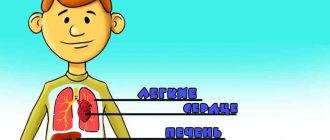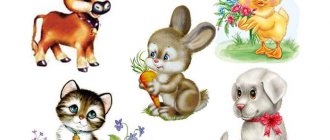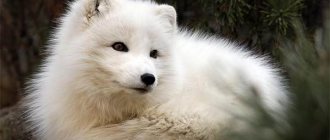Plants play an important role in our lives. We know indoor and wild plants. Indoor ones grow on our windowsills in pots, and many children are very familiar with them.
If you are introducing children to plants in class, you can try asking the question: what houseplants do children know? Surely they will name at least a few.
Medicinal plants are also of great importance: many medicines are made from them. When telling children about medicinal plants, do not forget to mention plantain. Children should definitely know what a plantain looks like. The kids run a lot outside and often fall, scraping their knees. Plantain can be the best medicine for wounds and scratches if you apply a clean leaf to the wound in time. Plantain is our reliable friend on hikes, when there may not be medicine at hand. The juice of this plant is often infused with alcohol and drunk for colds. So every child should know the plantain by sight.
What's the best way to introduce children to plants? Images, coloring pages, riddles and poems on our website will help with this.
Related materials
Children need to be introduced not only to the appearance of plants, but a detailed description will help parents or educators with this. They will benefit from information about what parts plants contain. The structure of plants is presented in pictures and diagrams on our website.
In this article on my blog you can download free pictures, coloring pages, riddles and poems, as well as a game for the most inquisitive kids about the parts and structure of individual plants. The game is called "Children about plants." In it, your child will get acquainted with all known flowers, learn what their parts and structure are. Each flower consists of a flower, leaves, stem and roots. The game consists of colored pictures - flowers that you can cut into cards and connect like puzzles.
Plant structure
You can download the game “Children about plants” here for free - click on the picture below. Here you can find out what the structure of a flower is and what its parts are.
This game can be played individually or can be used in early childhood schools and kindergartens. It will complement any lessons about plants well and is even suitable as a first introduction to plants for children. With the help of the game “Children about plants”, your child will broaden his horizons, learn what parts and structure, and in addition, such games develop fine motor skills of the fingers, thereby stimulating the development of speech and, of course, memory, attentiveness, logic and perseverance.
Other schemes
Flower structure.
The structure of a tree branch. Flower structure.
Parts of a tree.
Coloring pages
Coloring books can play a huge role in a child's development. In them you can find both indoor and medicinal plants, for example, plantain, lily of the valley, geranium, etc.
Coloring pages will not only teach you about the parts of plants, but will also allow children to know what color they are. Coloring books develop perseverance, a sense of color and shadow, and attentiveness.
Houseplants
How to understand that a houseplant does not have enough light?
How to properly care?
Medicinal plants
Poems and riddles
Poems and riddles can enhance interesting tasks and games about plants. One of the main characters of poetic works is the lily of the valley. Lily of the valley blooms in spring: its inflorescences are very similar to bells, and the surprisingly white color symbolizes purity. That is why many poets have lily of the valley in their dedications to spring and love. Poems and riddles where lily of the valley is present are among the most common. Riddles develop intelligence and ingenuity, and poems are useful for memory.
Riddles and poems usually contain wild plants, but indoor plants can also be found.
Cards
What are the types of flowers?
A few words about lilies of the valley
Developmental tasks on the topic
Write a story using the pictures.
Choose the appropriate flower size for each watering can.
Build a logical chain.
An assignment in English about plants.
Let's develop logic.
What does a flower breathe?
Help the chicken count all the worms hidden among the plants.
Help the girl count all the flowers.
Find it in the forest.
How many flowers are hidden here?
We develop fine motor skills of the fingers.
Plants of the forest.
Use all forms of tasks for the development of children: they will definitely be beneficial. Have fun developing!
Plant structure
We continue to get acquainted with plants
, and today in class we will look at
their structure
.
All living organisms
consist of
similar substances: inorganic and organic.
Inorganic substances are
water and mineral salts
.
Organic substances
are
sugar and starch
.
You already know that among plants
there are
trees, shrubs and grasses
.
No matter how different the plants are in appearance
, most of them have
a similar structure
.
All plants are made up of organs
.
They have a root, a shoot, a flower and a fruit with seeds.
Root
- is found in the soil, which is why it is called
the underground organ of the plant
.
A shoot, a flower, a fruit with seeds
are
above-ground organs
.
Now we will get to know them better. The root grows down and anchors the plant in the soil
.
From the soil
it absorbs
the water
and
minerals
.
The roots
of different plants may differ
in appearance
.
Sometimes in the roots
Nutrients
can be stored in reserve , and then their
appearance
.
Radishes, carrots, and beets
store nutrients
in their roots
, which are correctly called
root vegetables
.
The part of the plant that is above the ground is called a shoot
.
The shoot
develops from the bud.
The shoot
consists
of a stem, leaves and buds .
A stem is
an organ of a plant that bears leaves, flowers and fruits
.
The stems
carry the leaves up into the sunlight and connect them to the roots.
Most plants have erect stems
, growing vertically upward.
Stems
they can also twine around a support, for example in
bindweed,
or spread along the ground, for example in
tenacious
.
The escape
Let's look at the structure
of the kidney
.
On the outside they are covered with dense leathery scales
.
The scales
protect
the internal parts of the kidneys from damage and adverse environmental conditions.
Plant
buds leaf and flower
.
Leaf and flower buds have small green leaves
.
They are located on a very short stem
.
Inside the flower buds, in addition to the leaves, there are small flower buds
.
Flower buds
are larger than
leaf buds
and have a more rounded shape.
In different species
Plant
buds are located differently
on the shoots; they have
different shapes, sizes and colors
.
Based on these features, you can determine the name of a tree or shrub even in winter
.
Sheet
is also
part of the escape
.
The leaves
of different plant species are very
different from each other
.
They can have different shapes
, such as
round, oval, linear, heart-shaped and lobed.
Some
very
large
leaves , while others have very
small ones
.
For example, in the greenhouses of botanical gardens
they grow
a tropical aquatic plant Victoria Amazonica
, which is related to our
water lilies
. The Victoria leaf is so large that a small child can sit on it, like a raft, and the leaf will keep him afloat.
Most plants have two leaf parts
:
leaf blade and petiole
.
The leaf blade
is the expanded part of the leaf, in most cases it is green in color.
From below it passes into the petiole
-
the narrowed part of the leaf
.
With its help, the leaf blade
is attached to the stem.
The leaves of some plants
, such as aloe,
do not have a petiole
.
They are attached to the stem by the lower part of the leaf blade
.
Sheet
Leaves are divided into simple and complex
.
Simple leaves consist of one leaf blade.
They are characteristic, for example, of
linden, maple, oak
.
Compound leaves
consist of several leaf blades
connected to a common
petiole
by small
petioles
.
Such leaves
are characteristic of
chestnut, rowan and other plants
.
Leaves
Flower
- the most beautiful organ.
A flower
, like a shoot,
develops from a bud.
Large flowers usually develop
one at a time on a shoot
.
Small flowers
are
most often arranged
in groups
, i.e. collected in inflorescences .
The inflorescences
are characteristic, for example, of
chamomile, pear, dill and lilac
.
You, of course, paid attention to the variety of forms
,
colors
and
aromas
of plant flowers.
But they all have common structural features
.
At the bottom of the flower are the sepals.
Most often they are green and resemble plant leaves.
The petals
are located above the sepals .
In the middle of the flower
there is a pistil, and around it are
the stamens
.
They contain pollen
.
In order for the fruit
,
pollen from the stamens must reach the pistil
.
By the end of summer, almost all plants fade
.
Flower
Fruits appear in place of flowers
.
They develop from flowers
, primarily from the lower
part of the pistil
.
A fruit
is
an organ of flowering plants that contains seeds
.
They gradually grow and mature
.
Different plants have different fruits
.
These are bright rowan, grape and raspberry berries
, juicy
apricot, peach and orange fruits
, completely dry
lionfish
hazel nuts dressed in a strong
shell
Fruit
In some plants
one seed
inside the fruit , while others have
many
.
The fruits protect the seeds from damage
.
The life of a plant begins with seeds
.
Plant seeds
vary
in shape, color, size, weight
, but they all have
a similar structure
.
Orchids have seeds
so small that they can only be seen under a microscope. And in some palm trees the mass of seeds reaches several kilograms.
Let's get acquainted with the building
bean
seed .
Beans have large seeds
.
One side of the seed is convex, the other is concave
.
The outside of the seed is covered
with a shiny, smooth
seed coat
.
It protects the seed from drying out and damage. Under the seed coat
is
the embryo
.
An embryo
is
a small new organism
.
Large cotyledons
contain
a supply of nutrients
that are needed for the growth of the embryo.
bean seed
Summarize. All plants are made up of organs
.
They have an underground organ
-
the root
, and
above-ground organs
-
the stem, leaves, flower and fruit with seeds.








